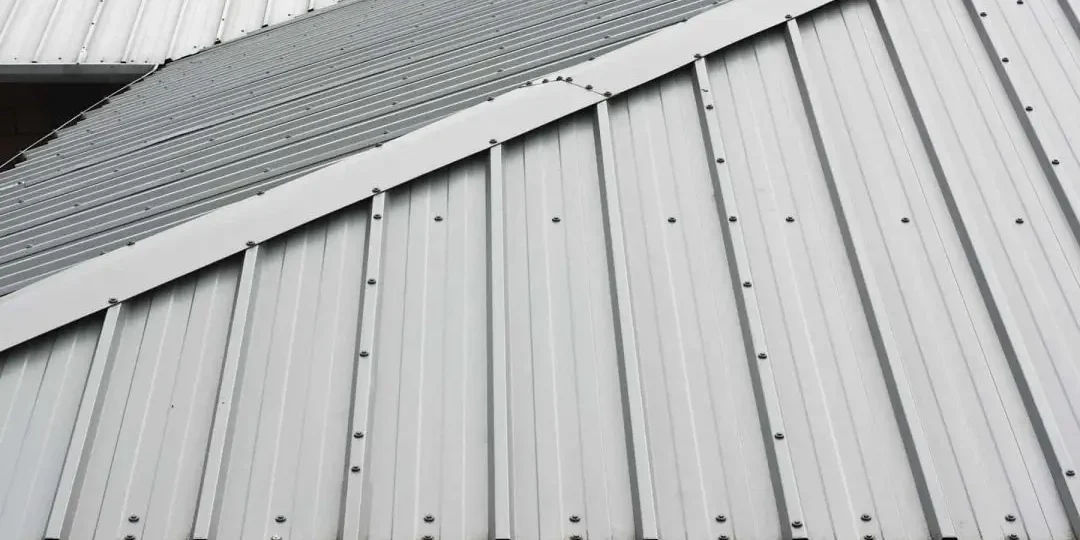When it comes to investing in a roof for your home or commercial property, longevity and durability are paramount. A metal roof, known for its resilience and energy efficiency, has increasingly become a popular choice among homeowners and business owners. However, the cost of a metal roof can sometimes be confusing, especially when you’re considering the different types of metal materials and installation processes. In this blog, we’ll break down the factors that influence the cost of a metal roof, what you can expect to pay, and why it could be a wise investment in the long run.
Factors Influencing the Cost of a Metal Roof
The overall cost of a metal roof is influenced by various factors, each playing a role in how much you’ll pay for materials, installation, and maintenance. Understanding these elements will help you make an informed decision when it’s time to replace your roof.
- Material Type: There are various types of metal roofing materials, such as steel, aluminum, copper, and zinc. Each material has its own pricing structure, with steel being one of the more affordable options, while copper and zinc are more expensive due to their premium qualities and aesthetic appeal.
- Roof Size and Complexity: The size of your roof is an obvious factor. A larger roof will cost more simply because more materials and labor are required. Additionally, the complexity of your roof design, including angles, valleys, and multiple storylines, can increase the overall installation cost.
- Labor Costs: Labor costs can vary depending on your location and the roofing company you hire. Skilled labor is essential for installing a metal roof properly, as it requires precision to ensure durability. Labor typically makes up 40% to 50% of the total cost of installation.
- Location: Your location can have a significant impact on both material and labor costs. For instance, a roofing contractor in a metropolitan area may charge more than one in a rural setting. Additionally, the availability of certain metal materials might also vary depending on the region, affecting pricing.
- Roof Pitch: The pitch or slope of your roof plays an important role in the overall installation costs. Steeper roofs generally require more labor and safety equipment, making the process more expensive.
Average Metal Roof Cost Breakdown
On average, the cost of a metal roof typically ranges between $5,000 to $14,000 for an average-sized home, depending on the factors mentioned above. Here’s a general breakdown of costs:
- Steel Roofing: This is one of the most popular and cost-effective options. Expect to pay between $5 to $10 per square foot for installation, depending on the type of steel used and any additional coatings applied to improve weather resistance.
- Aluminum Roofing: While more expensive than steel, aluminum roofing offers better corrosion resistance, especially in coastal areas. You can expect to pay around $7 to $12 per square foot for installation.
- Copper Roofing: Copper is one of the most durable and aesthetically pleasing options, but it comes with a higher price tag. Expect to pay between $15 and $30 per square foot for copper roofing.
- Standing Seam Metal Roofing: Standing seam roofs, which are made up of panels with raised seams, provide enhanced weather resistance and a sleek look. These typically cost between $8 and $16 per square foot for materials and installation.
Additional Costs:
- Roof Underlayment: An underlayment is necessary to protect your home from moisture and provide an additional layer of insulation. It typically adds $0.50 to $1.50 per square foot.
- Flashing and Trim: Flashing is essential for sealing joints and transitions, which may add another $500 to $1,000 to your project.
Why Metal Roofing Is Worth the Investment
While the initial cost of a metal roof might seem higher compared to traditional asphalt shingles, the long-term benefits make it a worthwhile investment. Here are some reasons why a metal roof is an excellent choice for homeowners:
- Durability: Metal roofs are incredibly durable and can last anywhere from 40 to 70 years, depending on the material. Steel and aluminum are resistant to extreme weather conditions, including hail, strong winds, and heavy snow. Unlike traditional roofing materials, metal roofs do not warp, crack, or curl over time.
- Energy Efficiency: Metal roofs reflect heat rather than absorbing it, which can help keep your home cooler in the summer months. This energy-efficient feature can reduce your cooling costs by up to 25%, making it a great option for homeowners looking to reduce their carbon footprint and lower utility bills.
- Low Maintenance: Metal roofs require minimal maintenance compared to other roofing types. As long as the roof is properly installed, you won’t have to worry about repairs or replacement for decades. This can save you significant amounts of money on future roof repairs.
- Environmental Impact: Metal roofing is one of the most environmentally friendly options. Many metal roofs are made from recycled materials, and they are also fully recyclable at the end of their lifespan. This makes them an eco-conscious choice for those who are concerned about sustainability.
Comparing Metal Roofs to Asphalt Shingles
Asphalt shingles have been the most popular roofing material in the United States for many years due to their lower upfront cost. However, when compared to metal roofing, asphalt shingles fall short in several key areas:
- Longevity: Asphalt shingles typically last between 15 and 30 years, while a metal roof can last more than double that. This means you’ll likely need to replace asphalt shingles once or twice before you even need to think about replacing a metal roof.
- Energy Efficiency: Asphalt shingles tend to absorb heat, which can increase cooling costs in warmer climates. In contrast, metal roofs reflect heat, which can significantly reduce energy consumption and keep your home cooler.
- Cost-Effectiveness: Although metal roofs are more expensive initially, they often prove to be more cost-effective over time. The longevity, energy savings, and reduced maintenance costs make metal roofs a smarter long-term investment compared to asphalt shingles.
What to Expect During Installation
The installation of a metal roof typically takes anywhere from a few days to a week, depending on the complexity of your roof and the size of your home. The process involves several stages, including:
- Preparation: The roof must be cleared of any existing materials, such as shingles, old metal panels, or debris.
- Underlayment Installation: A moisture barrier is applied to the roof deck before the metal panels are installed.
- Panel Installation: The metal panels are then attached, starting from the bottom of the roof and working upwards.
- Flashing and Trim: Flashing is installed around vents, chimneys, and roof edges to ensure the roof is waterproof.
Throughout the process, it’s essential to work with a trusted, professional roofing contractor to ensure that the installation is done correctly. Poor installation can lead to leaks and premature wear, negating the long-term benefits of a metal roof.
Conclusion
Investing in a metal roof can seem like a significant upfront expense, but the long-term benefits far outweigh the initial costs. With its unparalleled durability, energy efficiency, and low maintenance requirements, a metal roof is a wise investment that can protect your home or business for decades to come. By understanding the factors that influence the cost of metal roofing and choosing the right materials and installation options, you can make an informed decision and enjoy the peace of mind that comes with a high-quality roof.
At Surface Roofing, we offer expert roof installation services and would be happy to guide you through the process of choosing the right roofing solution for your property. Reach out to us today for a consultation!







